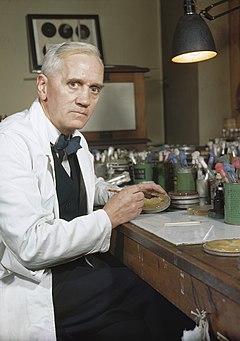Have you ever heard of “Penicillin”, the drug that every day saves hundreds and thousands of lives? Of course you have, Penicillin is general knowledge among with Sir Alexander Fleming, the biologist who discovered this magnificent drug. Although Fleming is widely known, a lot of people is not aware that he is actually Scottish.
 Alexander
Fleming was born on the sixth of August 1881 at a farm near Darvel. During
World War One, Fleming served as captain in the medical force. Watching soldiers
down in the trenches die from infections, Fleming decided to find a way to cure
infected wounds. Working as biologist at St. Marys Hospital, his laboratory were
messy and the equipment dirty. So as he left for holiday, all of his beakers
were stacked in the corner. As he returned, some of them had turned into some
sort of fungi, which could heal these infection-injuries. In 1945 he awarded
the Nobel prize in medicine.
Alexander
Fleming was born on the sixth of August 1881 at a farm near Darvel. During
World War One, Fleming served as captain in the medical force. Watching soldiers
down in the trenches die from infections, Fleming decided to find a way to cure
infected wounds. Working as biologist at St. Marys Hospital, his laboratory were
messy and the equipment dirty. So as he left for holiday, all of his beakers
were stacked in the corner. As he returned, some of them had turned into some
sort of fungi, which could heal these infection-injuries. In 1945 he awarded
the Nobel prize in medicine.
Fleming was
in 1955 struck by a heart attack. He died at his home 11. of March, but his
discoveries will live on, saving lives, even today!



